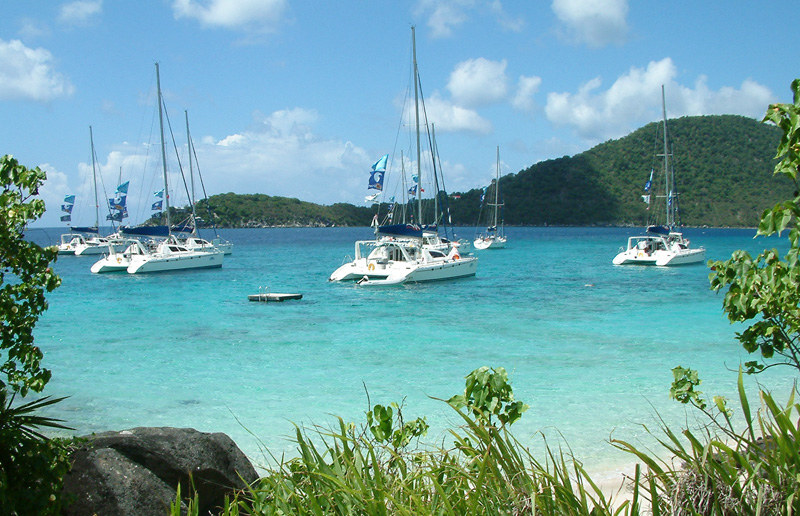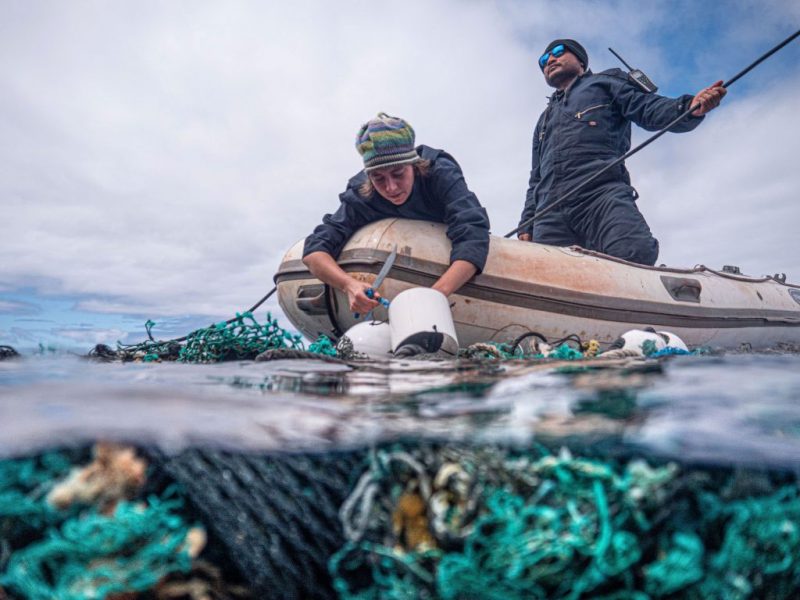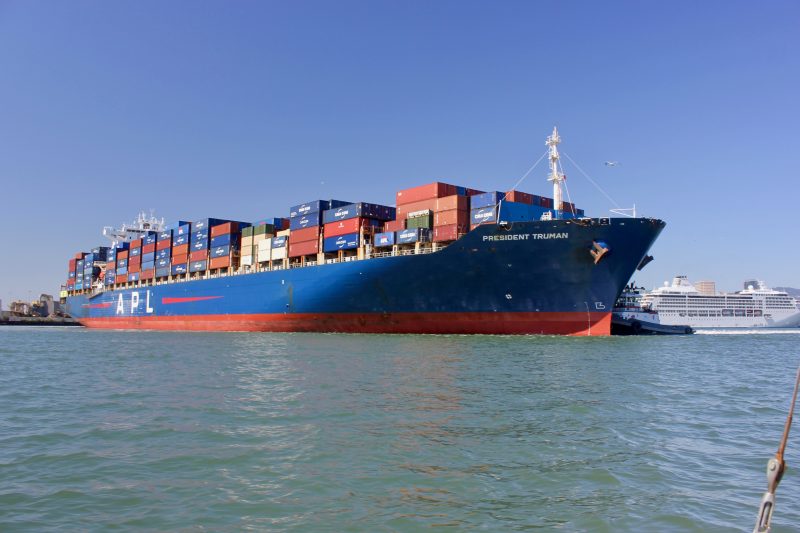
Is It Island Time Yet?
Almost all the cruising stories we’ve been reporting lately have involved the shutdown of various islands and cruising grounds. Recently the closing trends have slowly started to reverse, as islands get a handle on the caseloads and how to manage life during the pandemic. This gradual reopening now includes Caribbean islands, each in a different phase of inviting visitors to return, with a variety of safety protocols.

According to the New York Times, The Bahamas was due to enter Phase 2 of reopening on July 1, Jamaica reopened borders on June 15, Puerto Rico is reopening on July 15, Saint Lucia reopened borders on June 4, though international flights are just starting up in July, and the USVI reopened on June 1. None of this means life is back to normal. There are COVID testing requirements and procedures that vary by island. Flights are increasing but remain limited, and there are limitations on who can actually visit some islands. As of July 10, Jamaica is restricting visitors from places deemed high risk, which currently include Arizona, Florida, New York and Texas.
We spoke to Astrid Deeth of The Admiral’s Inn & Gunpowder Suites, located next to the Sunsail base in English Harbour, Antigua. Astrid reports, “Antigua reopened its borders on June 4th with daily flights from Miami on American, which have now been joined by twice-weekly flights on JetBlue from New York and weekly flights from Atlanta on Delta. Current protocols require all passengers arriving by air to have a negative COVID-19 RT-PCR within 7 days of their flight. Passengers arriving by sea are subject to 14 days quarantine.” You can learn more about the Antigua and Barbuda protocols here.
Though challenges remain, if you’re itching for an island vacation, there is a steady trend toward reopening. The charter bases are putting the necessary precautions in place and bookings are being accepted for charters later in the year. The Moorings base in St. Lucia reopens August 1, and other industry bases are starting to reopen as the season progresses. You could book a Sunsail vacation in the Bahamas now, but they are sold out into August.
Great Pacific Garbage Patch Haul
The Honolulu-based motorsailing vessel Kwai has recently returned to port with a record-setting haul of 103 tons of marine debris collected from the Great Pacific Garbage Patch. After being chartered by the Ocean Voyages Institute of Sausalito, the Kwai departed from Hilo in early May and embarked on a 48-day voyage to the Garbage Patch to collect previously tagged ‘ghost nets’ and other marine debris. An effort spearheaded by Bay Area sailor Mary Crowley, the Ocean Voyages Institute has now chartered the Kwai on multiple missions, including a trip last year that netted some 42 tons of rubbish. Continuing to shoot for the stars, Crowley and the Ocean Voyages Institute have said that they aim to recover about 400 tons of debris from the Garbage Patch in 2020 alone.

“I am so proud of our hard-working crew,” said Ocean Voyages Institute founder and executive director Mary Crowley in a statement. “We exceeded our goal of capturing 100 tons of toxic consumer plastics and derelict ‘ghost nets,’ and in these challenging times, we are continuing to help restore the health of our ocean, which influences our own health and the health of the planet.”

The trip to the Garbage Patch is just the latest effort by the Ocean Voyages Institute, which plans to send the Kwai to the North Pacific Gyre multiple times this year. One of the great dangers of the ocean, large derelict fishing nets litter the waters and pose a major threat to marine wildlife, coral reefs and even other vessels.
Once it’s tagged with a GPS locating beacon by a volunteer vessel — oftentimes a Transpac or Pacific Cup racing vessel that is being delivered home to the West Coast — the net will continue to drift at sea until the Kwai motorsails to its position and recovers the net, or until the net washes up onto an unsuspecting coral reef and leaves a trail of destruction. Crowley and her team have noticed that once they are on scene to retrieve one net, they tend to find several others nearby.

“Our solutions are scalable, and next year, we could have three vessels operating in the North Pacific Gyre for three months, all bringing in large cargoes of debris,” says Crowley. “We are aiming to expand to other parts of the world desperately needing efficient cleanup technologies. There is no doubt in my mind that our work is making the oceans healthier for the planet and safer for marine wildlife, as these nets will never again entangle or harm a whale, dolphin, turtle or reefs.” The Kwai should be headed back to sea around the time that you read this.
The success of the Ocean Voyages Institute’s missions to the Garbage Patch is a welcome sign of relief to any sailor who has sailed through the region, or to any environmentally conscious individual who has become aware of how truly devastating the problem of marine debris and plastic pollution is. While bringing in record-setting hauls of rubbish may sound great, it’s just further evidence that record amounts of rubbish are in the oceans.
The only way to really help solve the problem is for consumers to stop consuming single-use plastics. We try to be pretty environmentally friendly at Latitude 38. We urge all our readers to do the same. Whether it’s carrying a reusable metal water bottle or a reusable travel coffee mug, or even a spare Tupperware container for extra takeout food items, we can all make small adjustments every day that will help reduce our total plastic consumption, and thus how much ends up in the ocean or in a landfill.
Brickyard Cove Marina Has Slips to Rent
You Think This is Bad? — Remembering Harry
The ups and downs of COVID-19 drive us as crazy as everyone else. Can we go out to dinner yet – or not? Why isn’t everyone wearing masks? Is it safe to go sailing? Isn’t that guy closer than six feet? What are the stats for new infections today?
And just when we thought it was getting better, it got worse again.
With all due respect for the real financial and psychological impact the pandemic is having on society, if you think this is bad, let us relive a story for you that we did way back in 1996 about Captain Ottmar “Harry” Friz, one of the most amazing seafarers and gentlemen we’ve ever had the pleasure of meeting.

Capt. Friz had written a book about his lifetime of adventures, and was invited to talk at one of the Yachting Luncheons at the St. Francis YC. The part he talked about was arriving in Chanaral, Chile, in 1914 on the German full-rigger Blankenese, 68 days out of Australia. No sooner had the ship anchored than a launch from another German ship came alongside with the news, “Germany is at war with the world.”
“It was the undivided opinion aboard that this war would end in about six weeks and we could all go home,” recalled Friz, who was just 18 at the time.
Four years later, they were still there.
“After four years in the forecastle with the same men, well, one day I just wandered off and never came back,” he said. He caught a ride on an American schooner headed for Hawaii. Then a passage to Seattle on another ship.
The Blankenese didn’t leave Chile until 1921.
By that time, Friz had become an American citizen. He eventually obtained his mate’s and later master’s tickets and, over his 55-year career, served aboard 35 different vessels, many of them in and out of the Bay — including a stint skippering ferries on San Francisco Bay during the 1939 Golden Gate International Exposition. He spent his last dozen working years as port captain for the Military Sealift Command here in the Bay.
Harry ‘retired’ from his seagoing career in 1966. But certainly not from life. In 1993 — at age 97 — he wrote Liverpool Buttons and Homeward Bound Stitches (both references to a long time at sea and haste to get home). When we met him that day in 1996, he had just turned 100. His booming voice and bone-crunching handshake made him seem a lot younger.

Capt. Friz passed away in 2001 at age 105.
The Tables, and Ships, Are Turning in the Oakland Estuary
Last week, I was delivering my Columbia Challenger Esprit from San Rafael to Oakland, marking just the second time I’d made my way down the Estuary in a sailboat. Near the entrance, we saw that a container ship was turning behind Yerba Buena Island, rather than heading for the ‘parking lot’ of ships in the South Bay. Reaching toward the Estuary’s entrance, we decided to tack and let the ship pass in front of us before we transited the channel.


We fired up the outboard as we slipped into the Estuary and motorsailed down the channel, keeping pace with the big ship, named the President Truman. This was a near-identical scenario to the last time my friend and I had sailed this stretch of water. In spring 2017, at the conclusion of that year’s Master Mariners Regatta, we were pacing another ship down the Estuary, and wondered why it had missed the port and was apparently heading for Alameda — and maybe the after party at Encinal Yacht Club.
Suddenly — in both 2017 and 2020 — the ships stopped, then began a slow, clockwise turn.


In both instances, it was a tad unnerving to see a ship spinning in front of our tiny sailboats, but there’s obviously a plan, and a proper ‘basin’ where all this takes place, so that other boats have room to pass. With that said, it still all feels uncomfortably close to the un- or under-initiated. In addition, one must sail through the tugboat’s wash . . .

Anyway, got any Estuary stories? Please comment below, or write us here.

